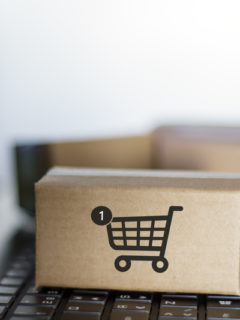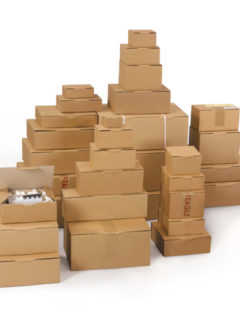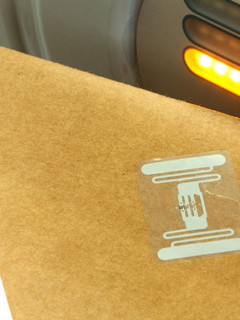Green logistics
First and foremost, green logistics is a strategic approach aimed at reducing the environmental impact of each of the tasks in the supply chain, from production to distribution and transport. In this way, within a warehouse, there is great concern for sustainability. The maximum effort is made to reduce waste management, by cutting energy costs and providing a more eco-responsible relationship with suppliers and customers.
In particular, packaging policy and the separation of parcels play a key role in green logistics. So, at RAJA we want to help you take a gamble on this new concept of business activity with 5 tips to make your warehouse more Eco-Responsible. So, where do you want to start?
1. Optimise stock management and picking
Finding an efficient stock management model that allows you to achieve your objectives with minimum energy expenditure and minimum movement is essential for green logistics. Whereas by optimising this aspect, we are focusing on improving picking planning. In other words, we can save space in our warehouse and automate processes to meet the principles of logistics 4.0. But above all, we will be organising the location of products in the best way. Therefore, one of the most used methods for this work is the ABC system, which classifies items into three categories. For example:
- High rotation (A). The most sought-after products in the warehouse. They must be placed in the packaging stations and in the shipping area;
- Medium rotation (B). Products with regular handling, but less than those assigned to high turnover (A);
- Low rotation (C). Products with low demand. They may therefore be placed in areas that are less accessible to operators.
In this way and on a practical level, it is advisable to take two more aspects into consideration:
- Heavy goods should be located at the bottom of the shelves to facilitate their handling and prevent accidents in the warehouse;
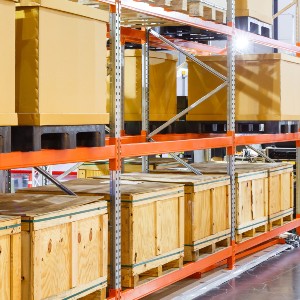 Handling varies according to whether or not we work with perishable products or products with a very marked seasonality. In sectors such as food or fashion, the FIFO (First In, First Out) system is used. However, for products whose value does not degrade over time, a LIFO (Last In, First Out) criteria is more efficient.
Handling varies according to whether or not we work with perishable products or products with a very marked seasonality. In sectors such as food or fashion, the FIFO (First In, First Out) system is used. However, for products whose value does not degrade over time, a LIFO (Last In, First Out) criteria is more efficient.
2. Reduce energy consumption in your warehouse operations
After all, consuming less energy is not only good for the environment, but also reduces company costs. Surely in green logistics, there are two ways to apply Eco-Responsibility in optimising your warehouse’s energy expenditure:
- Choose a sustainable design and construction system;
- Renovate your facilities with sustainable criteria. Switching lights to LED, opting for renewable sources of supply and strengthening insulation to lower the cost of air conditioning will have a very positive effect.
3. Implement recycling processes according to green logistics
In short, green logistics offers a great role to recycling. In addition, there are several legal devices that determine that companies develop waste management plans that guarantee hygiene, safety and care for the environment.
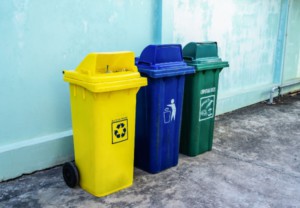
In the warehouse, the basic thing is to implement a sorting and selective collection system adapted to the needs of the entity responsible for waste management. As a general rule, waste can be separated into four main groups:
- Paper and cardboard;
- Plastics;
- Glass;
- Metal.
However, all chemicals and hazardous waste, which require specialised storage and treatment, are left aside.
On our website you will find a wide variety of bags, buckets and holders for waste management and collection that will support your recycling initiatives within green logistics.
4. Give returned and damaged products a second life
In addition to establishing quality control to reduce the number of returns and optimise reverse logistics, green logistics attaches great importance to the treatment of packaging that is returned and products that are damaged or difficult to market. For example, consider some suggestions to give a second life to these products:
- Develop the Corporate Social Responsibility (CSR) policy through donations to social projects;
- Correct the incidents that make it impossible to sell and return it to the market, through the usual channel or through other marketing channels of inferior qualities;
- Reuse some of the components or materials for the manufacture of other products, similar or different to the original.
5. Adopt an Eco-Responsible Packaging policy for your green logistics
Eco-Responsible packaging is part of green logistics in the warehouse. At RAJA, we often talk about the 5R’s of packaging to care for the environment. Remember ?
?
- Reduce the weight and volume of the packaging. These are products that travel protected without falling into excess packaging;
- Reuse, a task made easier with “return and return” packaging that facilitates the management of returns;
- Replace the most polluting packaging with eco-responsible, recycled or recyclable alternatives;
- Renew the stock of packaging, prioritising options made from renewable or bio-based raw materials;
- Recycle, thus contributing to the circular economy.
In short: Have you noted down our ideas for implementing green logistics in your warehouse? Well, now is the time to get to work. At RAJA we will accompany you with our catalogue of Eco-Responsible Packaging, the best solution for reducing the environmental impact of your business activity. Count on us!












